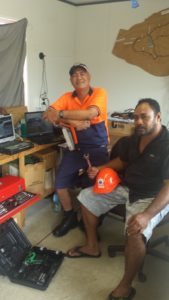 The deadly tsunami that hit Samoa and killed 143 people in 2009 after an 8.3 magnitude quake struck, led to villages being decimated with cars and people swept out to sea. This devastation and loss of life highlighted the challenges across emergency services in Samoa, especially in terms of coordinating search and rescue operations and providing warnings to people at risk.
The deadly tsunami that hit Samoa and killed 143 people in 2009 after an 8.3 magnitude quake struck, led to villages being decimated with cars and people swept out to sea. This devastation and loss of life highlighted the challenges across emergency services in Samoa, especially in terms of coordinating search and rescue operations and providing warnings to people at risk.
As a result of this devastation the Samoan Government created the Emergency Radio Network (ERN) to save lives. The system allows the hospital, the Red Cross, Police, Fire, the NDMO and other key emergency services to immediately communicate with each other without having to invest in separate systems.
Efficient and effective communication saves lives, money and resources; by reducing the time it takes to communicate during emergencies the response becomes more effective. This focus is at the core of Samoa’s drive to ensure this system is the most effective emergency response system and working with the Building Safety and Resilience in the Pacific project a review has been conducted to ensure critical equipment provides the best protection to the country.
The project this year has supported the review and provided recommendations to develop the system moving forward with best practice recommendations included along with undertaking maintenance and providing necessary spare parts to ensure it is ready if disaster strikes.
This system is critical as it not only allows for communication in real-time but it also ensures that when the Tsunami Early Warning System is activated the siren is broadcast through this network. This ERN is critical for the future protection of the lives and livelihoods of the people of Samoa and we will continue to develop and support this work throughout 2016.
